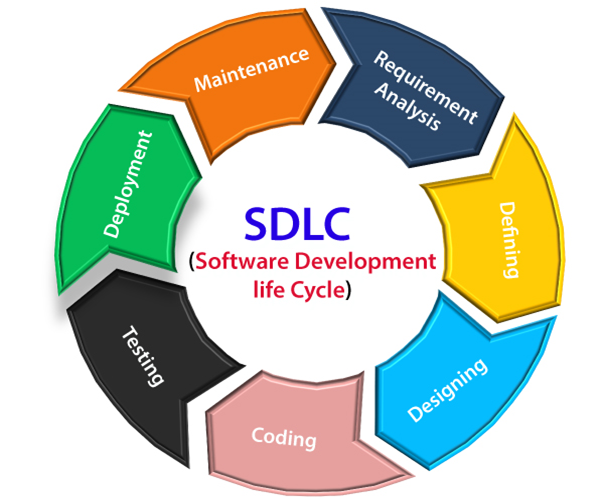1. Understanding Software Testing in Real Projects
1.1 Definition and Importance of Software Testing
Software testing is a critical phase in the software development lifecycle that ensures the quality, functionality, and security of an application before it reaches end users. It involves evaluating a system to identify defects, verify requirements, and validate expected outcomes. Ensuring a bug-free, seamless user experience enhances customer satisfaction and business success.
1.2 Different Types of Testing Approaches
Software testing encompasses various methodologies, including:
- Manual Testing: Testers execute test cases manually without automation tools.
- Automated Testing: Scripts and tools like Selenium, TOSCA, and JUnit automate repetitive tests.
- Functional Testing: Verifies that the software behaves as expected.
- Performance Testing: Assesses speed, scalability, and stability under load.
- Security Testing: Identifies vulnerabilities and protects against threats.
- Usability Testing: Evaluates user experience and interface intuitiveness.
1.3 The Role of Software Testing in the Development Lifecycle
Software testing is integrated throughout the development lifecycle, from unit testing in early coding stages to integration, system, and acceptance testing before deployment. Agile and DevOps methodologies emphasize continuous testing to accelerate releases and maintain quality.
2. Case Study: E-Commerce Application Testing
2.1 Overview of the E-Commerce Platform
An e-commerce platform connects businesses with customers, facilitating online purchases, payments, and inventory management. Popular platforms include Shopify, Magento, and WooCommerce.
2.2 Testing Strategies Employed
- Functional Testing: Verified product catalog, shopping cart, and checkout functionalities.
- Load Testing: Simulated high user traffic during peak shopping seasons.
- Security Testing: Ensured payment gateways complied with PCI DSS standards.
- Cross-Browser Testing: Confirmed compatibility across various devices and browsers.
2.3 Key Challenges Faced and Solutions Implemented
- Challenge: High cart abandonment due to slow checkout.
- Solution: Optimized database queries and integrated caching mechanisms.
- Challenge: Security vulnerabilities in payment processing.
- Solution: Implemented multi-factor authentication (MFA) and SSL encryption.
3. Case Study: Mobile Banking Application Testing
3.1 Introduction to the Mobile Banking App
Mobile banking apps enable customers to perform transactions, check balances, and access financial services. Security, reliability, and usability are critical.
3.2 Testing Techniques Used for Security and Usability
- Penetration Testing: Identified and mitigated security loopholes.
- Regression Testing: Ensured new updates didn’t break existing functionalities.
- Accessibility Testing: Made the app user-friendly for differently-abled individuals.
- Performance Testing: Ensured fast response times and minimal downtime.
3.3 Lessons Learned from User Feedback and Testing Results
- Lesson: Early security testing prevents costly breaches.
- Lesson: User feedback-driven updates improve customer satisfaction.
- Lesson: Regular usability testing reduces churn rates.
4. Case Study: Enterprise Resource Planning (ERP) System Testing
4.1 Background of the ERP Implementation
An ERP system integrates business processes such as finance, HR, and supply chain. A well-tested ERP ensures smooth operations and minimal disruptions.
4.2 Comprehensive Testing Approaches and Tools
- End-to-End Testing: Validated all modules from procurement to financial reporting.
- Database Testing: Ensured data integrity and seamless migration.
- API Testing: Verified seamless communication between different ERP modules.
- Automation Tools: Used SAP TAO and TOSCA for efficient regression testing.
4.3 Outcomes and Improvements Post-Testing
- Reduced Downtime: Automated testing reduced defects in production.
- Enhanced Security: Role-based access controls improved data security.
- Higher User Adoption: Intuitive UI and smooth functionality increased employee engagement.
5. Best Practices for Learning from Real-Life Testing Projects
5.1 Analyzing Test Cases and Test Plans
- Review well-documented test cases and scenarios.
- Identify gaps and continuously refine testing strategies.
- Use traceability matrices to link requirements with test cases.
5.2 Importance of Continuous Integration and Deployment (CI/CD)
- Implement automated test suites within CI/CD pipelines.
- Ensure quick feedback loops to detect defects early.
- Leverage tools like Jenkins, GitHub Actions, and Docker for efficient deployments.
5.3 Encouraging a Culture of Collaboration and Open Feedback
- Foster communication between developers, testers, and stakeholders.
- Encourage exploratory testing and knowledge sharing.
- Conduct retrospectives to improve future testing cycles.
Conclusion: Key Takeaways from Real-Life Software Testing Projects
Real-world software testing projects emphasize the importance of structured test planning, automation, and continuous improvement. Learning from case studies in e-commerce, mobile banking, and ERP systems provides practical insights into overcoming challenges and ensuring robust software quality.
Frequently Asked Questions (FAQs)
1. What are the most common types of software testing methods?
Common testing methods include unit testing, integration testing, functional testing, performance testing, security testing, usability testing, and regression testing.
2. How can one measure the effectiveness of software testing?
Effectiveness can be measured through defect density, test coverage, pass/fail rates, user feedback, and post-release defect tracking.
3. What skills are essential for a successful software tester?
Key skills include analytical thinking, test automation proficiency, knowledge of programming languages, experience with testing tools, understanding of Agile/DevOps methodologies, and strong communication skills.

